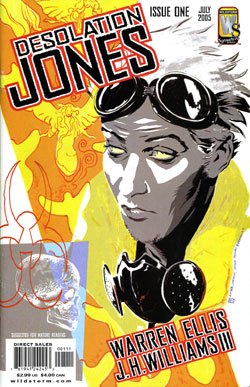
I can't decide whether I like bittersweet endings, like this one in The Girl Who Leapt Through Time, or not. When a fantastical magical adventure unfolds into a subtle first romance for the heroine and the hero, I cannot, for the life of me, choose an ending with their innocent faithful promises that they will be together in the future, or an ending with them getting together! The problem with the latter is how obviously trite it is - which spoils the whole fantasy of it all. But the problem I have with ending on the note of deep yearning to be together in the future (beyond the movie) is that I yearn as much as the characters do, for them to get together, and it just breaks my heart.
Yes so I cried watching The Girl Who Leapt Through Time, I'd like to know which romantic fool didn't, and I congratulate those who successfully resisted the tears. But I liked crying at the utterly sentimental and earth shattering moment when Chiaki (hero) pulls Makoto (heroine) close and makes his promise to her. I want a poster of that moment to always remind me how sweetly beautiful this film is.
This film was good at that - being sweet and innocent, just like that first taste of love we all had. You will be transported back to the good ol' days at school, where the greatest heartache was watching that handsome boy with the 'tao' attitude walk up to another girl. The gentle mood captured in the film is akin to that of walking through a park on a summery day with someone you want, close to you.
That is how the movie gets away with its lack of logic in its time-travelling explanations. The theories of time-travelling weren't elaborated, they weren't investigated, much. But you don't really care. You don't feel a burning need to know the science and math of the hows - you just want to see the consequences.
Consequence is very much the focus of this animated film; consequence of decisions when you have certain powers; to be precisely precise - the consequences of playing with time.
Do NOT expect a Butterfly Effect movie - and thank heavens for that - because no matter how much Butterfly Effect was a tolerable enough movie, this film is so much more intimate and grounded in the naivete of one young girl's handling of the people in the world around her. As she learns of the clash between reality and her impractical beliefs in innocence. she gradually builds up her courage to take the one leap she had never dared to: the leap into the realm of love.
Love drives this film - love of the characters for the familiar faces they bring to mind, love of the world that, like our own, possessed that bit of magic for some to stumble upon, or those brave enough to seek it. And love, in its purest form shared between two people who believe, and have faith.
If you've run low on your own supply of faith in the miracle called love, or you just want to be reminded again what it was like to fall for the first time, then take a leap with The Girl Who Leapt Through Time, and be ready to fall, all over again.


